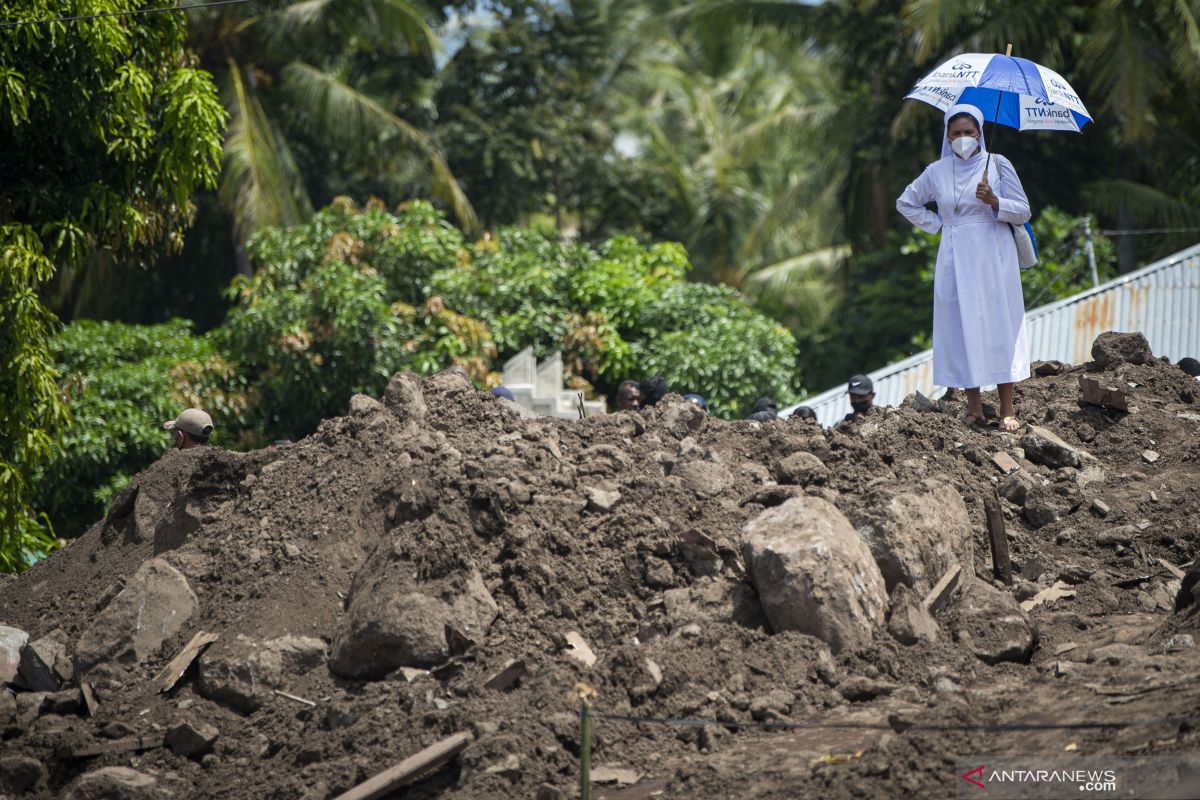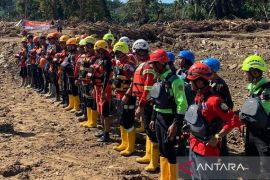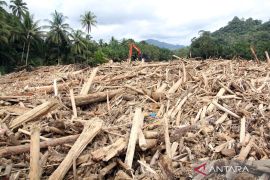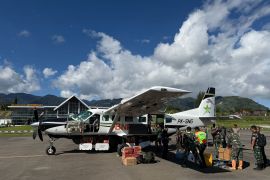Whether we like it or not, we must accept the fact that 2021 may be a very difficult period for the global community. Endless suffering is the new reality. Natural disasters have engulfed many communities in several countries, including Indonesia, that are already shrouded by the pandemic, which has entered its second year. While Indonesia experienced natural disasters a few months ago, a number of countries have only witnessed them in the past few days.
In the second week of January this year, several cities and districts in South Kalimantan were hit by heavy floods. The same week, a landslide that claimed several lives was reported in Cihanjuang village, Sumedang, West Java. The calamities didn't stop there. More lives were lost in flash floods in East Flores district, East Nusa Tenggara in the first week of April.
In the last week of July, the Tojo Una-Una area in the province of Central Sulawesi (Sulteng) was rocked by two earthquakes. The 6.3-magnitude quakes rattled Poso residents and even prompted COVID-19 patients to flee from a hospital building in the area.
But, Indonesia is not alone in facing adverse natural events.
In Asia, China and India have also been hit by disasters recently. In the third week of July this year, North India was hit by heavy rains that caused landslides and flash floods in two states. As a result of floods, lives were lost and cars and houses were washed away in Dharamshala in the Himalayan state of Himachal Pradesh.
The streak of natural disasters in China was even more terrifying.
Not only was China hit by heavy floods, several of its areas were also battered by typhoon In-Fa and sandstorms. Days of heavy rain caused heavy flooding in Henan province and claimed lives on July 20, 2021.
Then, on July 25, typhoon In-fa triggered torrential rains and massive flooding across the Shanghai area. The same day, a huge sandstorm hit Dunhuang City. A wall of sand, about 100 meters high, swallowed tall buildings in the city, which is located in Gansu province on the edge of the Gobi Desert.
Europe was also not spared from natural disasters, which claimed many lives. Since mid-July 2021, major floods have hit a number of countries in Western Europe, including Germany, Belgium, France, the Netherlands, Switzerland, and Italy.
Natural disasters have also occurred in mainland America. Overflowing of rivers due to heavy rains resulted in floods, accompanied by mud and debris, hitting Zapopan, a city in the Mexican state of Jalisco, on July 26, 2021. Meanwhile, Brazil was hit by a snowstorm that brought temperatures in several South American states down to minus eight degrees Celsius.
Then, the Alaska region of the United States was shaken by an 8.2-magnitude quake on Wednesday July 28, 2021 evening (local time). The US Tsunami Warning Center immediately issued a tsunami warning for southern Alaska and the Alaskan peninsula. Although a few hours later the tsunami warning was lifted, the Alaska earthquake prompted several countries in the region to increase their vigilance.
All records of recent natural disaster events in various parts of the world seem to signal that the universe is not being so friendly to humans.
That serves as a reminder for Indonesia to not be careless. Anticipatory activities must be increased on account that Indonesia lies in the Ring of Fire. All regional governments and the people should be encouraged to better recognize the potential of disasters in their respective regions, and actively listen to information from the authorities.
The threat is real for Indonesia. It needs to be noted that volcanic activity in some volcanoes is still quite high. Mount Sinabung in Karo District, North Sumatra, erupted again on Wednesday, July 28, at 1.20 p.m. local time.
In Lembata Regency, East Nusa Tenggara, sand rain was reported in three villages of Ile Ape district on Saturday, July 31 after the Ile Lewotolok volcano erupted.
According to the Geological Disaster Technology Research and Development Center (BPPTKG), volcanic activity in Mount Merapi in the Yogya-Central Java region was still high until the last week of July 2021. Due to volcanic activity, Merapi often causes hundreds of lava avalanches. It is also important to note the potential of earthquakes and tsunamis in the south of Java Island.
We should be grateful that both the Meteorology, Climatology, and Geophysical Agency (BMKG) and the BPPTKG are continuing to monitor and update information about potential disasters.
The BMKG-BPPTKG updates are not meant to scare or worry people. Instead, they should be taken as a means to educate and increase awareness as well as encourage the public to be active in disaster mitigation exercises or preparations.
Due to human limitations, natural disasters are difficult to avoid or prevent. But, by understanding and recognizing the potential for disasters, the worst can be avoided, as the regional governments and the public will be better prepared.
- Bambang Soesatyo, People's Consultative Assembly Speaker
- Subedited by ANTARA journalist Mecca Yumna
Related news: Jokowi urges BMKG to increase disaster mitigation, management capacity
Copyright © ANTARA 2021












